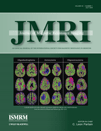SAR and power implications of different RF shimming strategies in the pelvis for 7T MRI
Abstract
Purpose
To determine the best radiofrequency (RF) shimming method for 7 T body imaging that provides sufficient B1+ excitation inside the target region while energy deposition (SAR) and power demands are as low as possible and that does not incorporate anatomy specific electric field information inside the patient models, as this information is not available in practice.
Materials and Methods
Finite difference time domain (FDTD) simulations were used to evaluate five RF shimming strategies for the pelvis inside a body coil. The results were compared to the theoretical best solution that could be achieved if the electric field inside the patient was known.
Results
Most of the RF shimming strategies were successful. However, between the different strategies a factor of two difference in average SAR reduction, a factor of three difference in local maximum SAR reduction, and a factor of 20 difference in power efficiency was observed. Phase matching was found to be the most promising RF shimming method for the body coil used and patient models.
Conclusion
RF shimming can reduce the SAR and improve power efficiency in an accurate patient model without knowing the electric field. However, choosing the right method is critical to prevent unexpected behavior in local SAR deposition. J. Magn. Reson. Imaging 2009;30:194–202. © 2009 Wiley-Liss, Inc.




